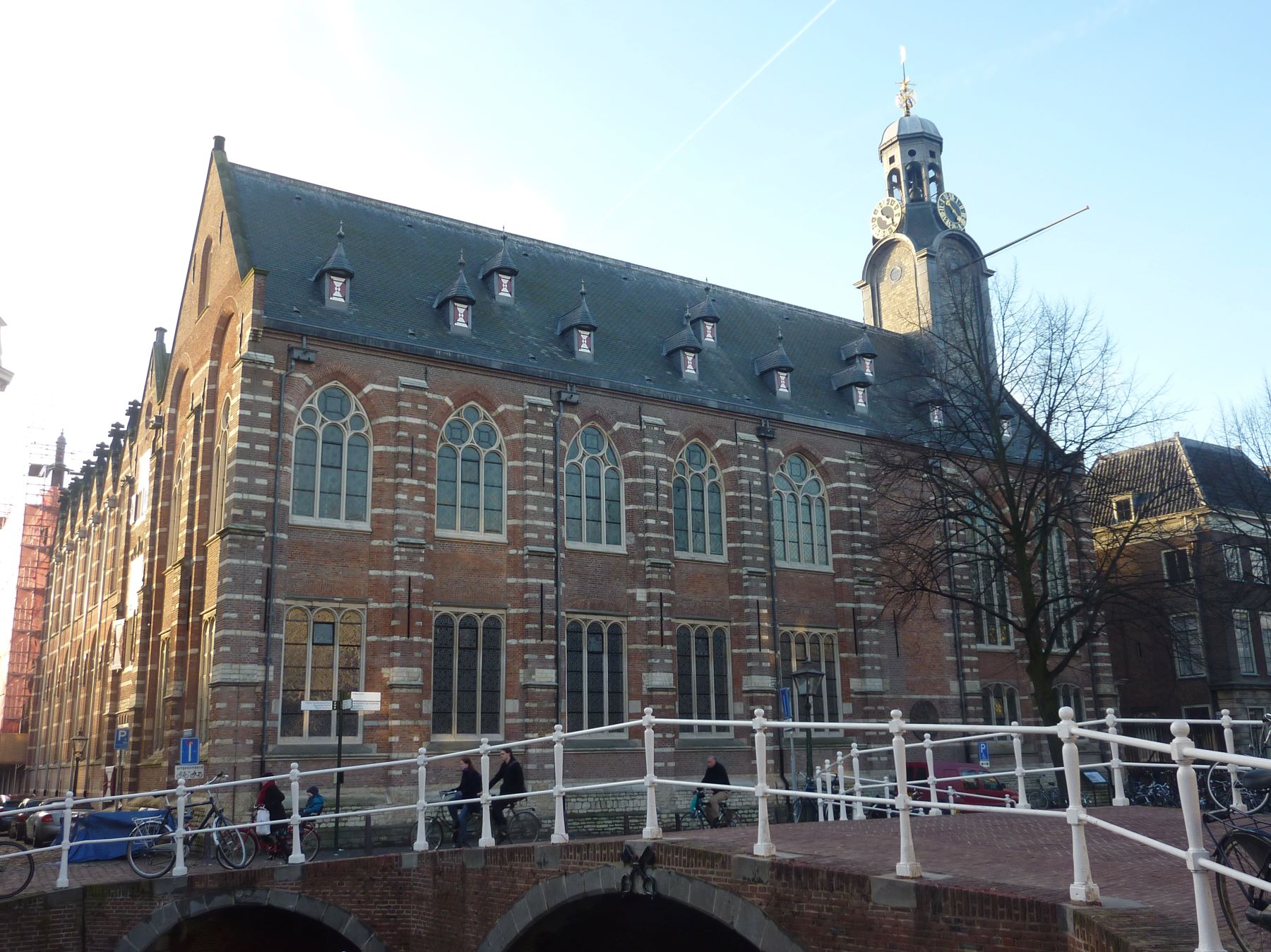
The University of Winchester is excited to announce a new Study Abroad partnership with Leiden University in the Netherlands, giving its BA English Literature students the opportunity to spend a semester at one of Europe’s oldest and most prestigious Universities.
Formed in 1575, Leiden University regularly appears in the most prominent international rankings, and its Arts and Humanities courses are currently listed at number 26 in The Times Higher Education World University Rankings.
In his blog, Glenn Fosbraey, Associate Dean in the Faculty of Humanities and Social Sciences, takes us on a tour of Leiden...
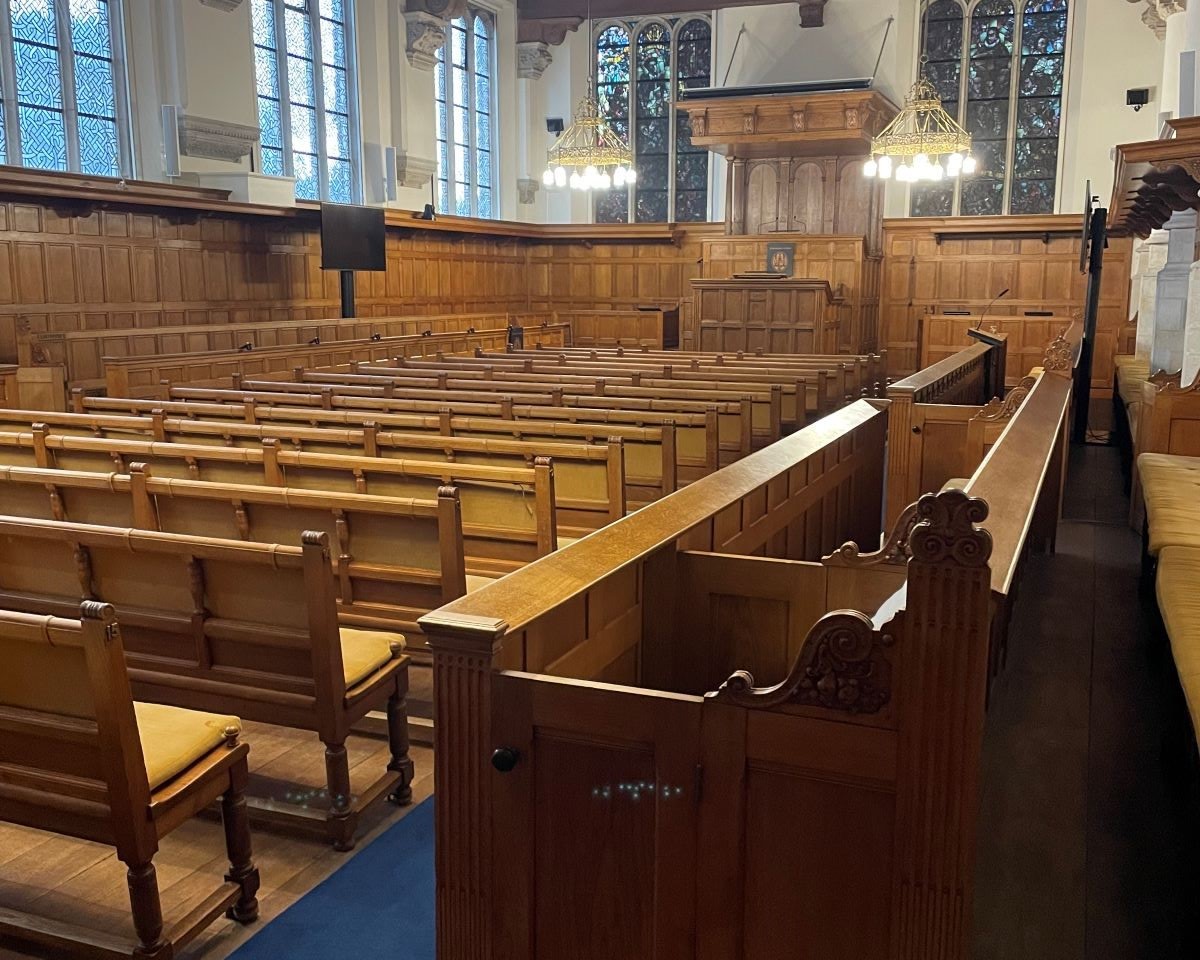 Pictured top and above: Leiden University's Academy Building, built in 1515 as part of a monastery church. Now it used for graduations and other ceremonial events.
Pictured top and above: Leiden University's Academy Building, built in 1515 as part of a monastery church. Now it used for graduations and other ceremonial events.
I had the great pleasure of visiting the University in November last year, where I spent some time sitting in on English Literature classes across all three undergraduate levels, as well as touring the Leiden campus (there is also a campus in the Hague, which is around 20km away).
Arriving at Amsterdam Centraal after a pleasant trip on the Eurostar, I made the 35-minute train journey to Leiden (€11.60 with set-your-watch-by-them-punctual trains leaving every ten minutes).
The Leiden campus is a very pleasant 20-minute walk (or six-minute bike ride if you want to join the thousands of other cyclists) along canals, over ornate bridges, past windmills, and through narrow streets of centuries-old houses with gabled roofs.
.jpg) Walking to the University
Walking to the University
The town strikes a balance between the old and the new, with market stalls selling cheese (wonderful), soused herring (not so wonderful), and Stroopwaffles (most wonderful of all) plying their trade at the canalside next to modern shops and fast-food outlets. Even the sounds offer the same juxtaposition, with the regular chiming of the bells from the 16th Century Town Hall contrasting with the sounds of traffic and bustle.
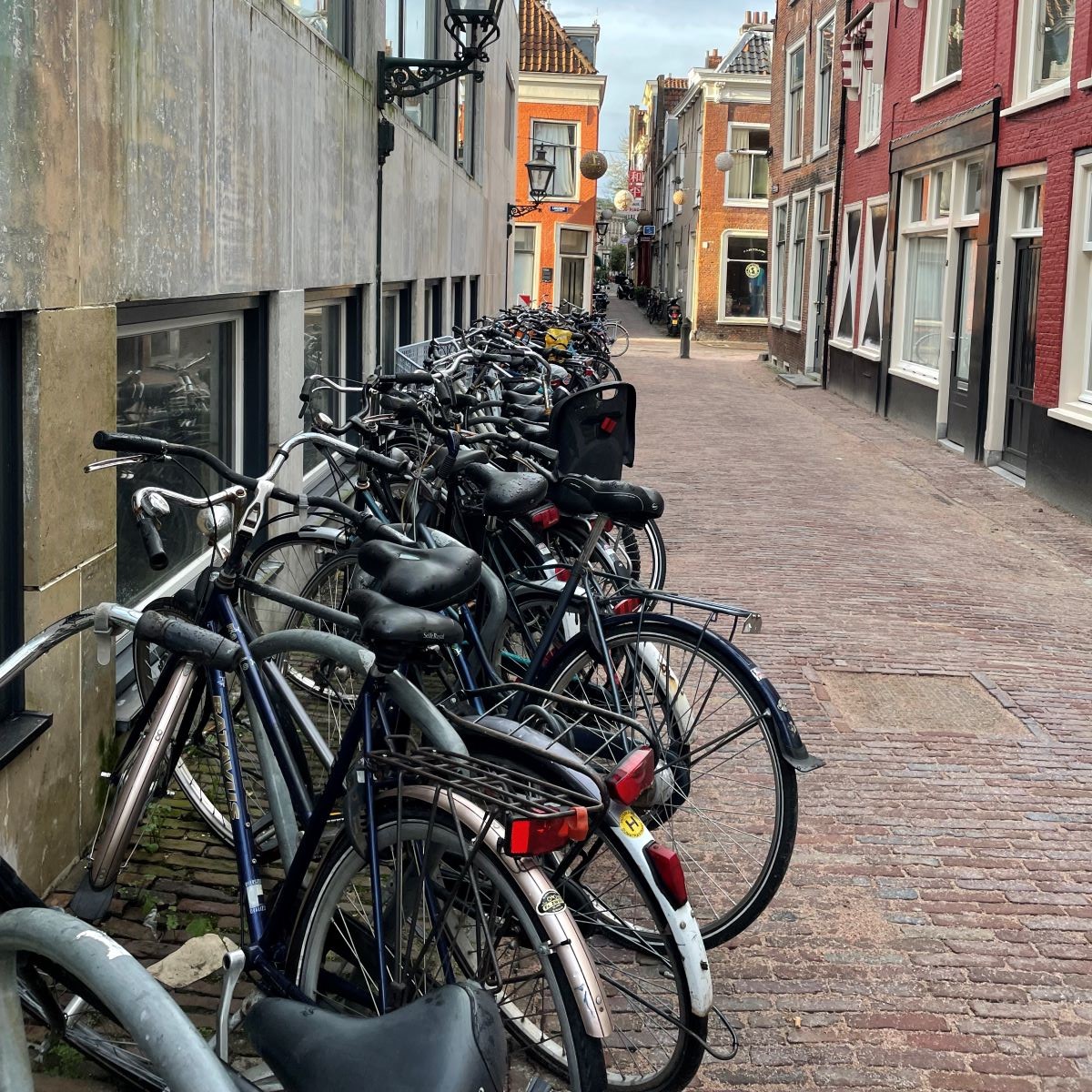 Bikes, bikes and more bikes..cycling is popular form of transport in Leiden
Bikes, bikes and more bikes..cycling is popular form of transport in Leiden
As I neared the University, I was struck by the sheer personality of the place: rows upon rows of bikes leant against every available edifice; an E.E. Cummings poem was printed in giant letters on the wall of someone’s house; globe-shaped wicker lights hung across a street; and the closely-packed houses were tall, thin, and topped with a variety of different gables. I even stumbled upon a plaque which noted the birthplace of a certain Rembrandt Van Rijn.
The main hub of the campus, the Lipsius Building is situated at the end of a typically narrow street and doesn’t intrude upon the elegance of the older structures that surround it.
.jpg) Glenn outside the Lipsius Building
Glenn outside the Lipsius Building
Once inside, it was immediately apparent that this was an institution that paid great attention to the welfare of its students. Just inside the foyer I saw a sign advertising the upcoming ‘Wellbeing Week’, a heavily subsidised drinks machine (including delicious hot chocolate for only 50 cents), and an ‘Act of Kindness’ board where every available space was filled with cards advertising everything from free language lessons to a place in a Dungeons and Dragons club.
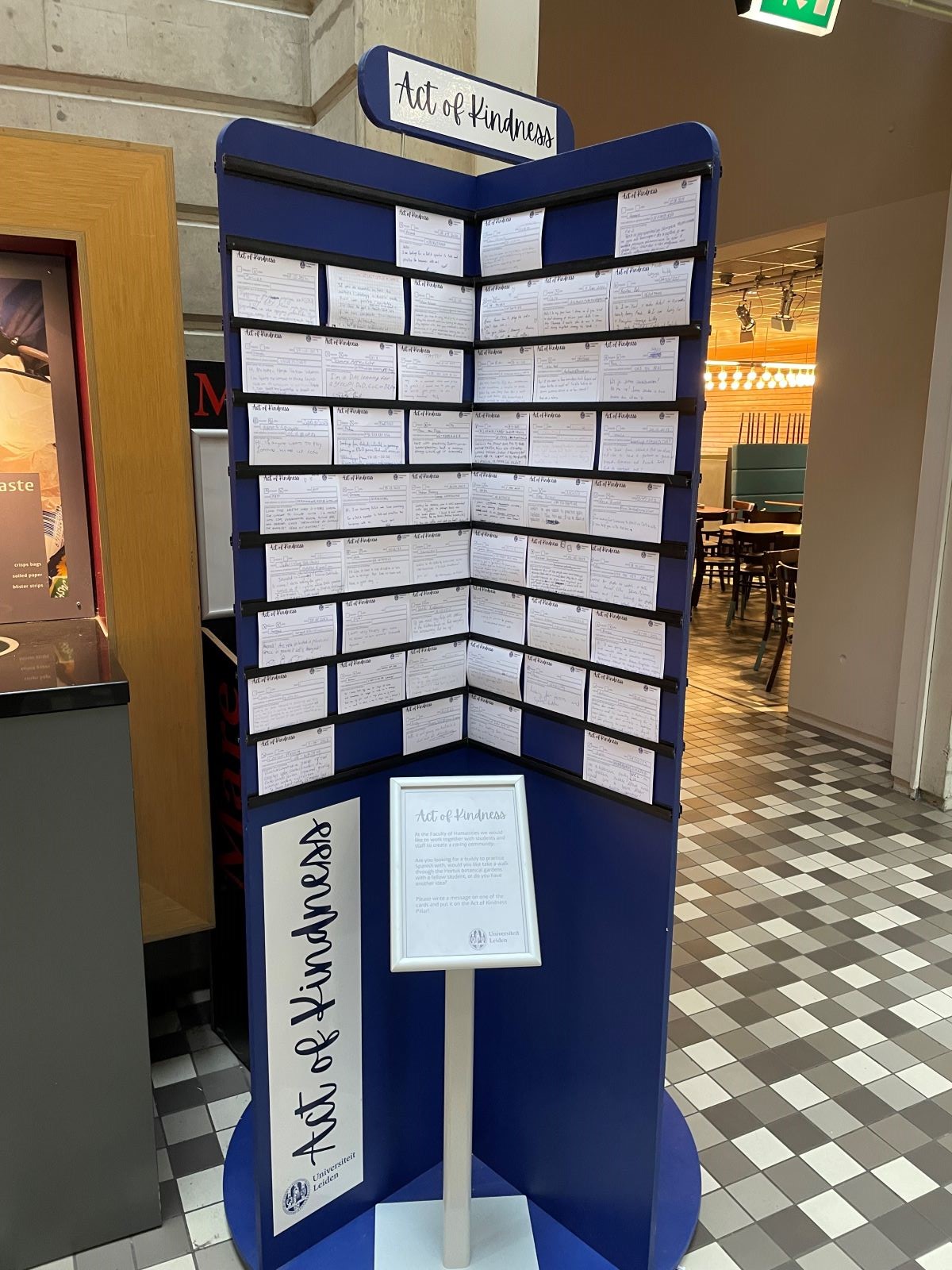
The Acts of Kindness Board
With plenty of spaces to study, chat, eat, and drink, the Lipsius Building buzzed with the kind of atmosphere that can only be found on a university campus, and I made my way to my first class of the day alongside students who were clearly excited to be there.
Lessons on the course are all in English, as are any in-class conversations, be that between students, or lecturer and students.
All the classes I visited would feel familiar to our own English Literature students, both in terms of their structure - a mixture of lecture and seminar-based content, with plenty of opportunity for interaction - and physical space, with the rooms, all offering full accessibility, largely indistinguishable from those we find on King Alfred’s Campus.
.jpg) The Lipsius Building
The Lipsius Building
Outside of the lessons, I kept myself well-hydrated and nourished by visiting some of cafes and eateries nearby. I joined one of the lecturers at nearby café Suppiershuysinghe (and no, I didn’t try to pronounce it), which is popular among both students and academics and offers hot drinks, pastries, cakes, and a resident cat; had an ‘Uitsmijter’ (a kind of open sandwich) at gastro bar Pakhuis Leiden; and Dutch speciality ‘Pannenkouken’ (a pancake that has been hitting the protein drinks) at The Oudt Leyden, a 100 year-old pancake house.
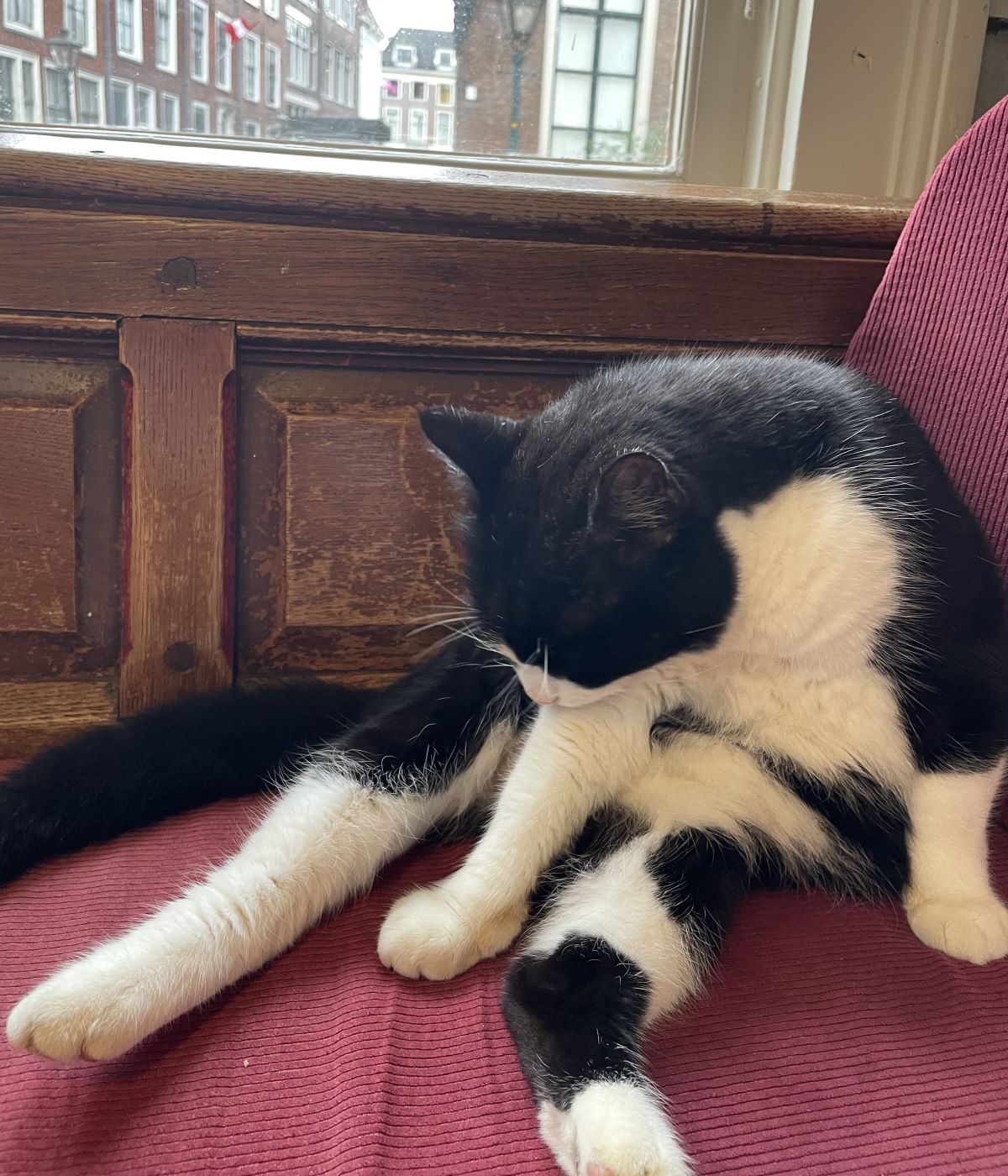 The Suppiershuysinghe’s resident cat
The Suppiershuysinghe’s resident cat
The Netherlands is a beautiful country with a rich, diverse culture, and Leiden is one of the jewels in its crown. It was with a heavy heart (and very full stomach), therefore, that I left Leiden and made my way back to the Eurostar on another punctual-to-the-second train. As the Dutch say: bedankt, Leiden, en tot snel weer (thank you, Leiden, and see you again soon).
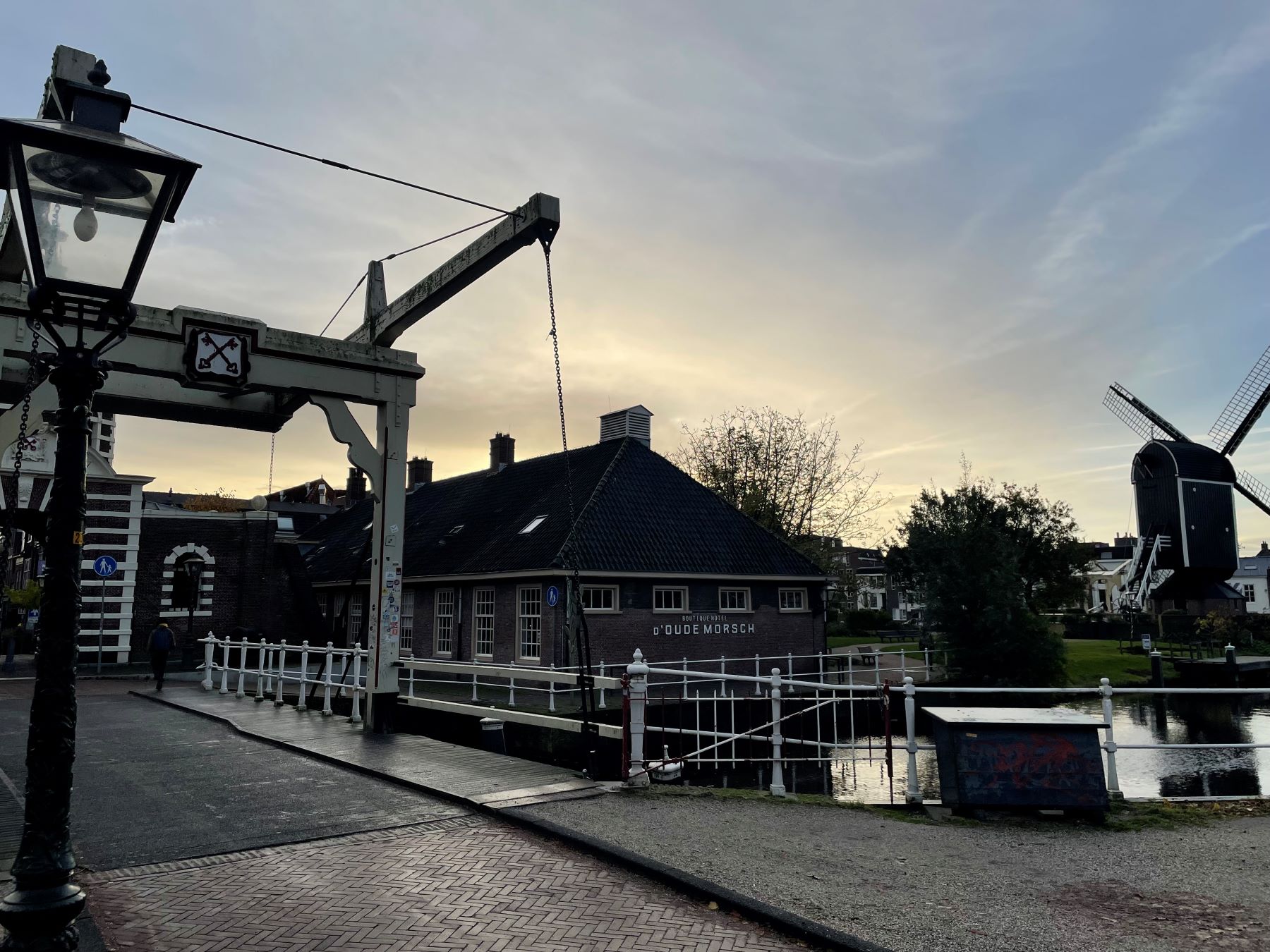 A view on the walk back to the station
A view on the walk back to the station
Back to media centre